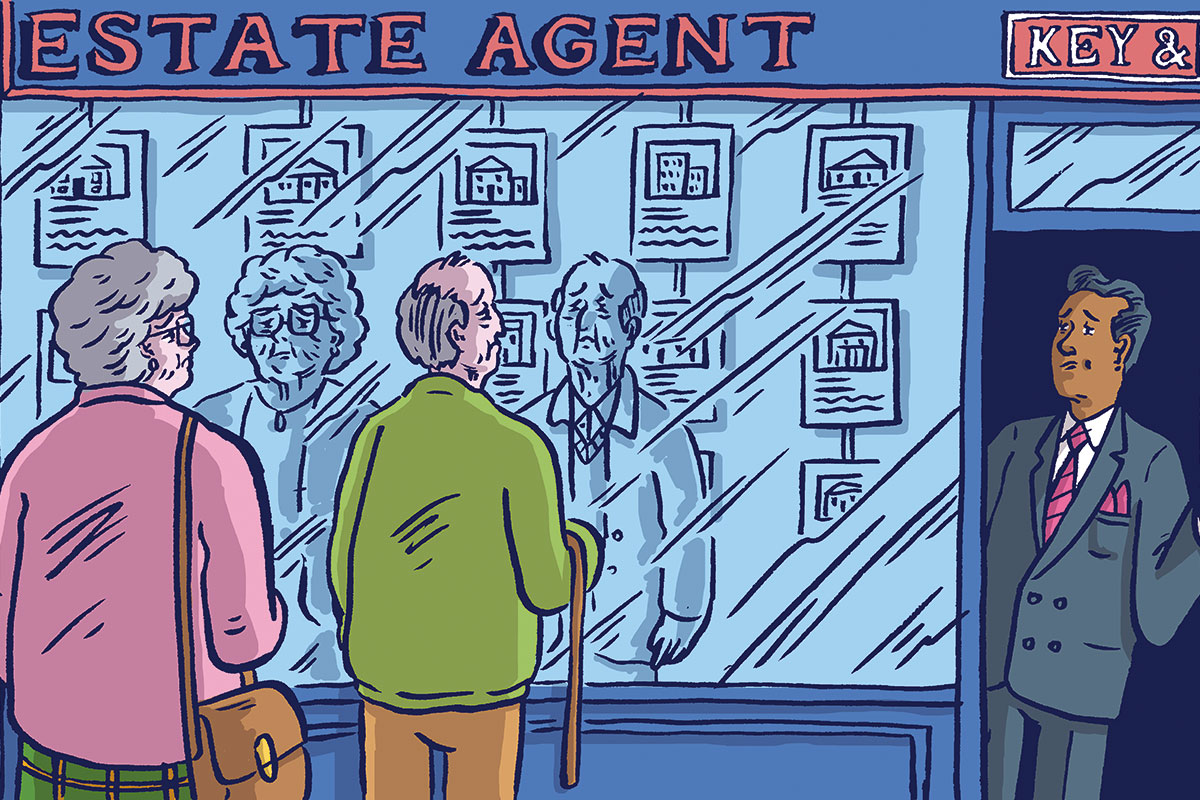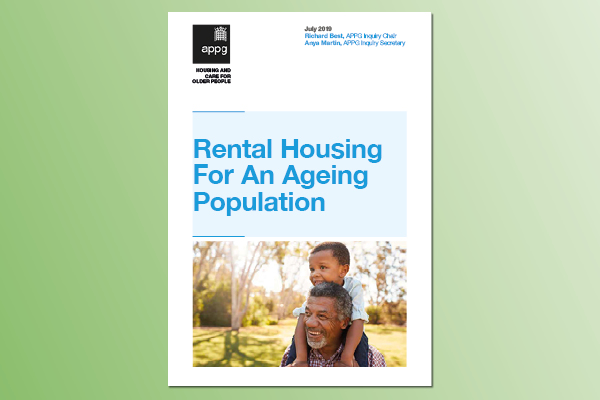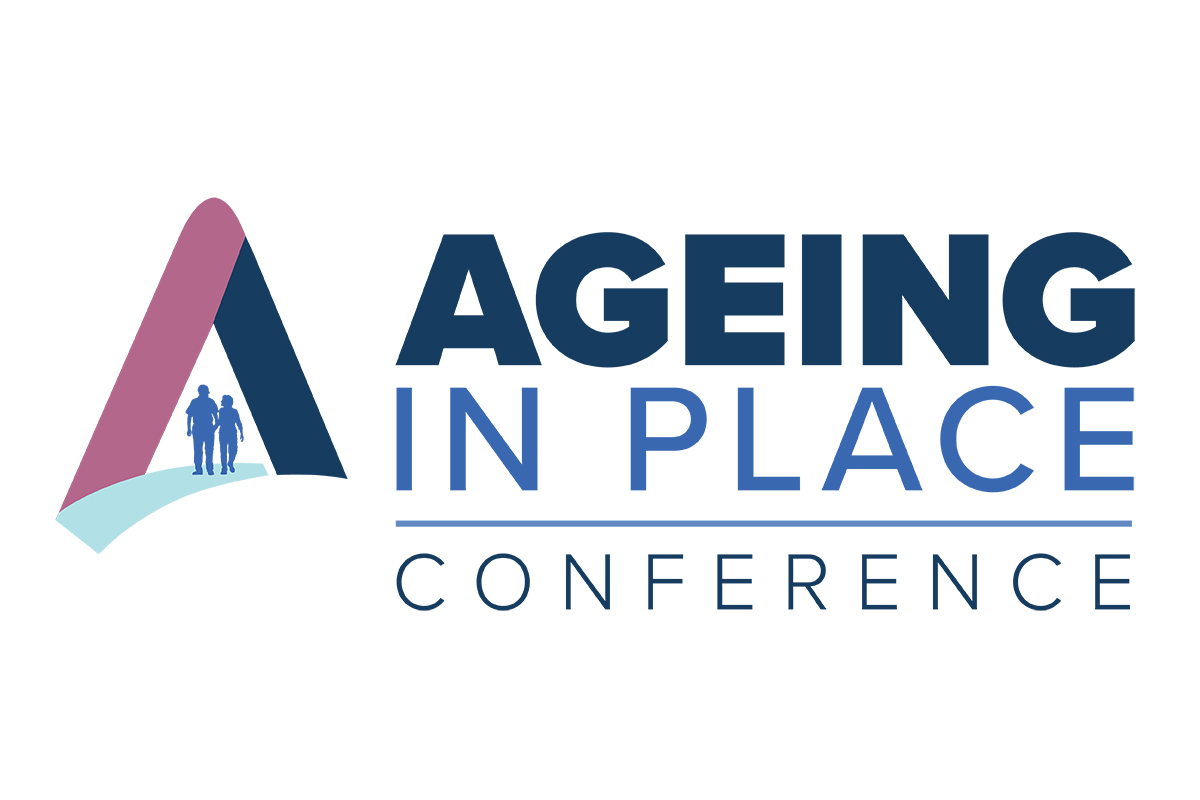You are viewing 1 of your 1 free articles
What happens when Generation Rent grows up?
An ageing population and a dwindling band of homeowners are storing up problems when it comes to housing for older people. How big is the crisis? And what can be done to avert it? Gavriel Hollander finds out. Illustration by Dom McKenzie
“Sometimes we have a perception of what an older person is and we might need to reflect on that,” says Moira Griffiths, group director of care and support at Peabody. “It’s not someone just sitting in a care home.”
Inside Housing is talking to Ms Griffiths about a ticking demographic timebomb that a recent parliamentary report – supported by Peabody – describes in stark terms: namely the problem of rental housing for older people. That report from the All-Party Parliamentary Group (APPG) for Housing and Care for Older People, chaired by Lord Richard Best, lays out the issue: we have an ageing population which will be increasingly reliant on rented housing – both in the private and social sectors – but which will have a diminishing pot of housing equity to fall back on.
In essence, the ‘timebomb’ is about what happens when Generation Rent reaches retirement age. What kind of housing will this generation need? And who is going to provide it?
In decades gone by, the assumption was that the majority of older people whose housing needs changed could rely on the housing equity built up through years of homeownership. Social tenants, meanwhile, could be offered a more suitable home if necessary. That took pressure off the part of the sector catering for those who had lived in social housing through their working years. But the decline in homeownership, coupled with the growth of the private rented sector (PRS), has changed the picture.
The APPG’s report, published in July, forecasts that the number of households in the PRS headed by someone aged over 64 will more than treble in the next 30 years, from 450,000 today to at least 1.5 million by 2046.
Figures from the English Housing Survey (EHS) show only a modest rise in over-65s renting in the PRS, from 4.4% in 2003/04 to 5.6% in 2017/18, having touched 6.3% the previous year.
However, those headline figures mask what could be around the corner. The latest EHS also shows that 9.3% of 55 to 64-year-olds are private renters, along with 15.8% of those aged 45 to 54 and more than a quarter of 35 to 44-year-olds. That adds up to around 2.2 million households in the private sector, with the large bulk unlikely ever to buy their own homes.
The report estimates the need for an average of 38,000 rental homes a year over the next three decades, with around a third of these being extra care or sheltered accommodation. And although this sounds like a problem for the future, the effects of the squeeze on older people in the PRS are already being felt by the most vulnerable. A National Audit Office analysis of homelessness last month revealed that the number of over 60-year-olds in temporary accommodation in England rose 39% in just five years, from 1,800 in 2012/13 to 2,500 in 2017/18.
“At that stage you either have an asset or you don’t; if you don’t, things are only going to get worse”
Sheron Carter, chief executive, Habinteg
So if this growing crisis is already obvious, what is being done to address it? According to John Galvin, chief executive of the Elderly Accommodation Counsel, relying on the private market won’t be enough.
“There’s a lot of talk about [what happens] when the current pattern of homeownership among older people starts to decline and when people who are used to renting want to move somewhere more age-friendly,” he says. “But the people testing the market now are targeting owner-
occupiers or people with assets or decent pensions.”
Those “testing the market” include a number of developers and funders that have cottoned on to the fact that there is an opportunity to build a new generation of housing for our ageing population. McCarthy & Stone, one of the UK’s biggest developers of retirement housing, has ramped up its pipeline in recent months, while also saying it will increase its use of discounts and part-exchange offers “to counteract more challenging secondary market conditions”.
Legal & General, one of the biggest institutional investors in the market, is also getting involved, having announced plans to build 3,000 retirement homes in city centres through its Guild Living subsidiary. This follows its acquisition of Inspired Villages in 2017, through which it plans to build 4,000 retirement homes in rural areas over the next five years.
What unites these developers is that, although there will likely be a scattering of homes for rent among their plans, the majority are targeted at the upper end of the market – that is to say those with existing homes from which they can downsize.
And according to some, this exacerbates the growing gulf between the haves and the have-nots among older renters. Another factor to consider for older people stuck in the private rented sector is that, as they retire, they are overwhelmingly likely to be left with a declining income as
pensions replace salaries.
“The big issue that concerns me is affordability,” comments Sheron Carter, chief executive of Habinteg, a housing association which specialises in accessible homes for disabled and older people. “At that stage [in life] you either have a lot of money and an asset or you don’t; if you don’t, things are only going to get worse.”
Spelling out the mechanics of how this works, Ms Carter continues: “If you have most private renters being poorer, they are likely to be reliant on housing benefit, so they will need accommodation that falls within the Local Housing Allowance.
“If you are an older private renter you can only afford the low end of the private rent market. The quality will be poorer and there’s a good chance people will have to subsidise rent.”
Ms Carter also raises the problem of adaptations to private rented homes, saying that she has heard anecdotal evidence that private landlords are less likely to approve the kind of accessibility upgrades that older people might require to stay in their own homes.
Peabody’s Ms Griffiths picks up the theme as well: “[For] the people who are 40-odd now and are renting in the private sector, [homes] are not always well maintained. Those landlords are less likely to be able to make adaptations.
“In many ways we are storing up a big problem for the future. What we need are more social and affordable housing options.”
That echoes the APPG’s findings, which suggest that the private sector is not ready to absorb the wave of older renters coming along in the next 30 years. Solutions, therefore, need to be found in the social sector.
Peabody is looking at changing what its offer for older residents might be. Ms Griffiths tells Inside Housing it is exploring different versions of inter-generational housing and smaller developments, based on the almshouse model, with communities run by and for local residents.
“The housing crisis in general, and the age-related shortfall, is going to have to precipitate some pretty big changes”
Roland Karthaus, director, Matter Architecture
“I am interested in some of the inter-generational stuff. That can often sound like young people helping out older people, but it’s more about mutuality. It’s a different housing offer to people who might not want to move into traditional sheltered or extra care housing.”
In a similar vein, Matter Architecture is working with two London councils – Camden and Ealing – on inter-generational projects, having been awarded a research grant by Innovate UK to look into the model.
In Ealing, it is taking 10 pilot sites and working with the council’s adult social care and clinical commissioning groups to see how support and care can be delivered across its housing stock, without it being ‘segregated’ exclusively into specialist housing. This could see some becoming inter-generational schemes.
“It’s particularly driven by the looming crisis in older people’s housing,” explains Roland Karthaus, a director at the practice. “Our premise is that addressing that problem cannot be through purely focusing on older people. They arise from the artificial segregation of older people and younger people.”
That segregation becomes even more artificial when accounting for the fact that people are healthier further into old age than before and, often, retiring later.
“There’s a question about what you mean by older,” continues Mr Karthaus. “Lots of people in their 60s are much fitter than they might have been in their 40s. The offer should be about people’s needs rather than their demographics.”
Clearly, renting – both privately and in the social sector – will be a far bigger part of the picture when it comes to retirement housing than it is currently. But according to Mr Karthaus, a solution to this impending crisis needs a change in mindset.
“The housing crisis in general, and the age-related shortfall, is going to have to precipitate some pretty big changes,” he concludes. “It’s not easy to see what those changes could be. We still as a nation do not see renting as a mainstream option.”
Ageing in Place 2019
Ageing in Place is a new conference brought to you by Inside Housing. It is designed to facilitate dialogue between housing associations, social and health care providers, local authorities, research bodies and technology providers, to create the right housing environment to support older tenants in their own homes.
This one-day event brings together leading industry expert speakers to deliver presentations, panel debates and fireside chats covering the most crucial topics.
Key topics include:
- The demographic time bomb: there are more than 11 million people aged 65 or over in the UK and this figure is expected to rise by nearly 50% in the next 15 years – increasing the need for homes that are designed or adapted for older people
- Collaboration and partnership: we will look at how policies and practices need to be integrated with collaboration across a wide range of agencies including local councils, adult social care, the NHS and local charities
- Design and adaptation for independent living: how to improve independence and quality of life, aid and increase mobility, avoid costs of residential care, prevent falls and other health interventions, and reduce repeat spend on numerous adaptations
- Assistive technology: sharing best practice, through practical examples and key learnings from pilots, schemes and programmes aimed at choosing the right assistive technologies for improving the safety, health and well-being of older, vulnerable tenants so they can stay at home
The conference takes place on 7 October at etc.venues, 8 Fenchurch Place, London.















